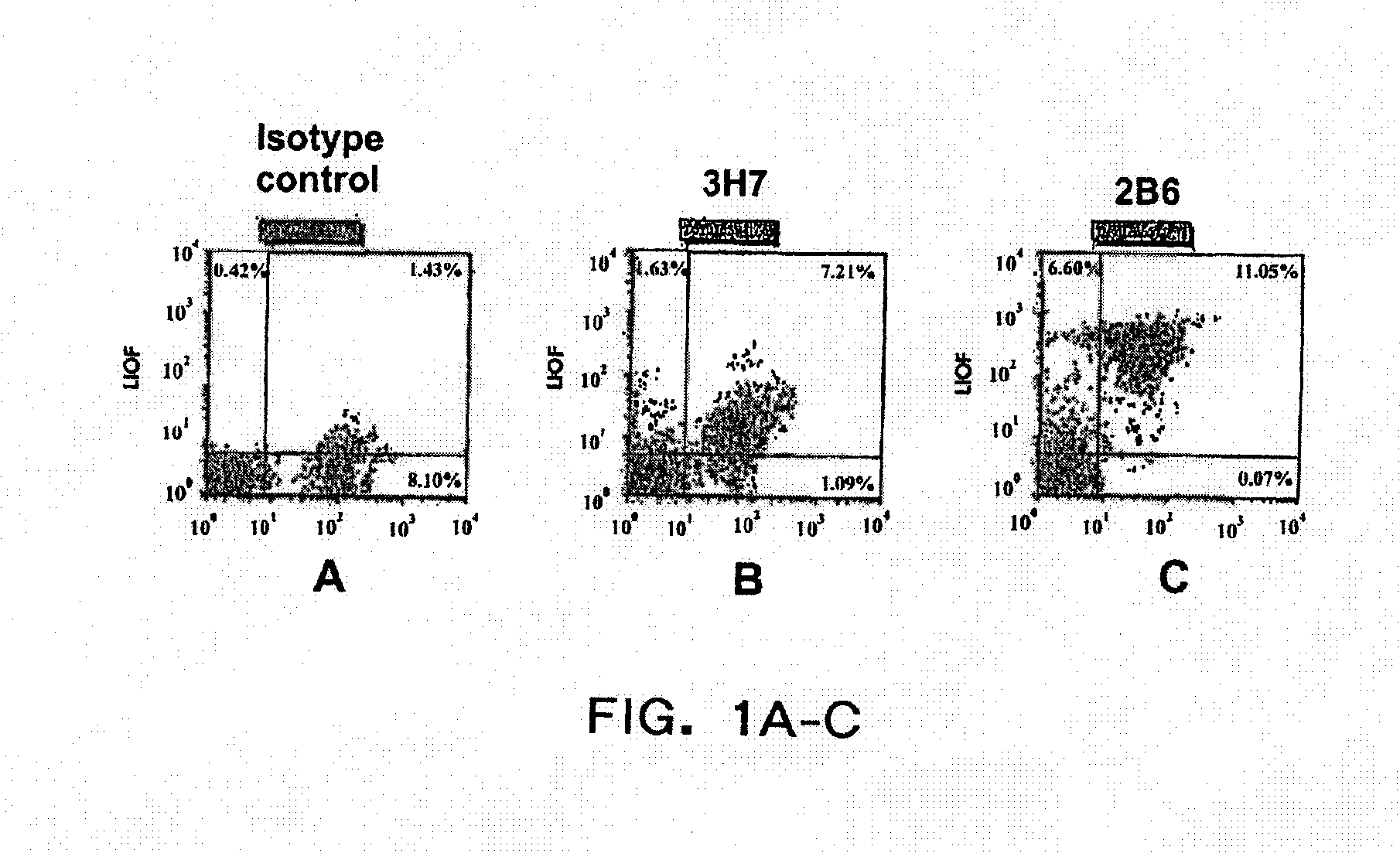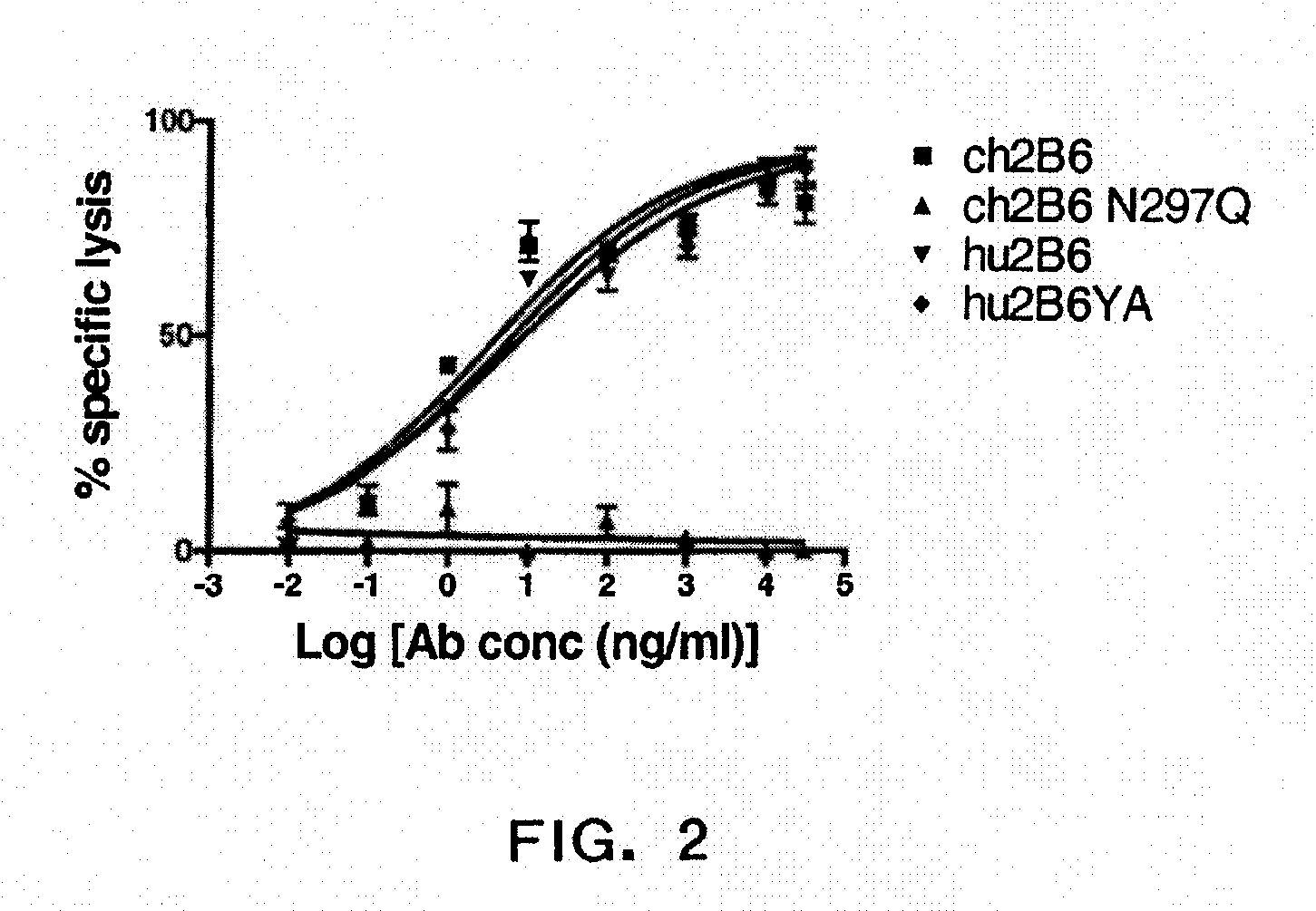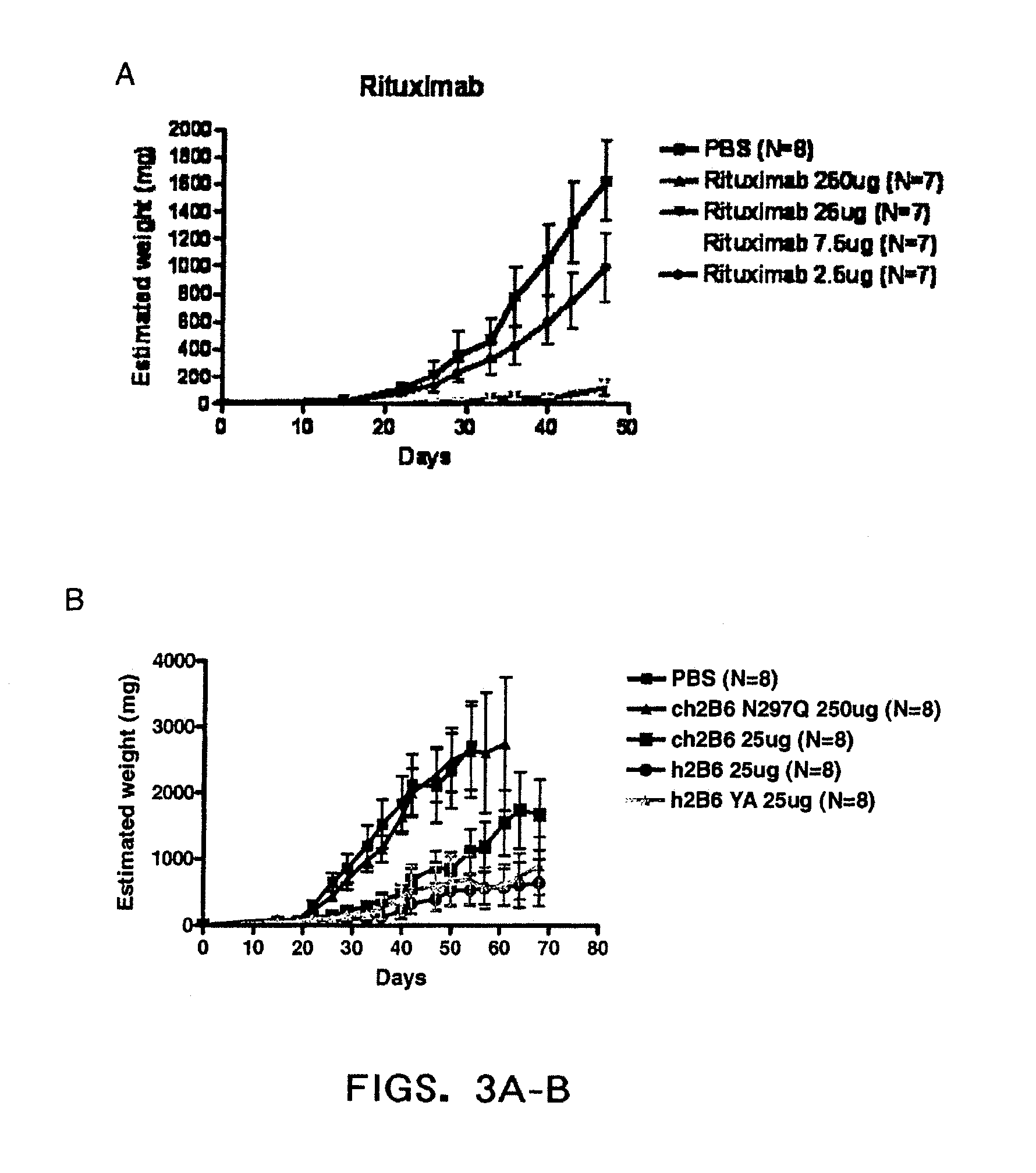Combination of FcgammaRIIB-Specific Antibodies and CD20-Specific Antibodies and Methods of Use Thereof
a technology of cd20 and specific antibodies, which is applied in the field of conjugation of fcgammariibspecific antibodies and cd20specific antibodies, can solve the problems of increasing the number of destruction, affecting so as to prolong the survival of subjects, improve the efficacy of standard or experimental treatment, and prevent, treat, or ameliorate the effect of b cell malignancies
- Summary
- Abstract
- Description
- Claims
- Application Information
AI Technical Summary
Benefits of technology
Problems solved by technology
Method used
Image
Examples
example 1
Characterization of Monoclonal Anti-FcγRIIB Antibodies
[0375]Monoclonal anti-FcγRIIB Antibodies and CD20 co-stain Human B Lymphocytes. A double staining FACS assay was used to characterize the antibody produced from clones 2B6 and 3H7 in human B lymphocytes. Cells were stained with anti-CD20 antibody which was FITC conjugated, to select the B-lymphocyte population, as well as the antibodies produced from clone 3H7 and 2B6, labeled with goat anti-mouse peroxidase. The horizontal axis represents the intensity of the anti-CD20 antibody fluorescence and the vertical axis represents the intensity of the monoclonal antibody fluorescence. As shown in FIGS. 1B and 1C, cells are double stained with the anti-CD20 antibody as well as the antibodies produced from clones 2B6 and 3H7, however, the antibody produced from clone 2B6 shows more intense staining than that produced from clone 3H7. FIG. 1A shows the staining of the isotype control, mouse IgG1.
[0376]Effect Of Ch2B6 Antibodies On Tumor Gro...
example 2
Expression of CD32B on B-CLL Cells
[0383]The ability of CD32B-specific antibodies to react with CD32B on cells isolated from patients with B-CLL was tested by staining isolated cells in FACS analysis.
[0384]Protocol for isolating B cells from patients. Mononuclear leukocytes from peripheral blood leukocytes from normal donors and B cell neoplasia patients were isolated by using Ficoll-Paque PLUS (Amesrham Pharmacia Biotech) gradient centrifugation and cryopreserved in aliquots in liquid nitrogen. An aliquot of freshly isolated PBMCs from each patient was washed in PBS containing 10% human serum and analyzed immediately for CD32B expression by standard FACS analysis. Single-cell suspension from lymph node biopsy specimens will be prepared in similar manner, will be immediately analyzed, and will be cryopreserved in liquid nitrogen.
[0385]Two cytospin slides were obtained from each samples and one stained immediately with May-Grunwald Giemsa (MGG) for morphological evaluation. Prior to a...
example 3
Expression of CD32B in Lymph Nodes from Patients with Non-Hodgkin's Lymphoma
[0388]To investigate expression of CD32B in lymph nodes from patients with non-Hodgkin's lymphomas, histological analysis and immunohistochemistry was performed on a series of lymphatic tissues from patients with a confirmed diagnosis of B cell neoplasia based on histological and FACS analysis criteria.
[0389]Tissue specimens. Frozen lymph nodes were obtained from the Cooperative Human Tissue Network (CHTN), Mid-Atlantic Division (Charlottesville, Va.). The tissue was received in dry ice, and upon arrival sectioned in two portions, one for histopathological analysis of the tumor and the other portion for Immunohistochemistry analysis.
[0390]Histopathological analysis and Immunohistochemistry. All eleven cases were fixed in 10% Neutral Buffered Formalin (NBF) and paraffinized in a tissue processor (Miles Scientific). After paraffinization, tissue blocks were sectioned with a Leica Microtome (Leica Microsystems,...
PUM
| Property | Measurement | Unit |
|---|---|---|
| Therapeutic | aaaaa | aaaaa |
| Affinity | aaaaa | aaaaa |
Abstract
Description
Claims
Application Information
 Login to View More
Login to View More - R&D
- Intellectual Property
- Life Sciences
- Materials
- Tech Scout
- Unparalleled Data Quality
- Higher Quality Content
- 60% Fewer Hallucinations
Browse by: Latest US Patents, China's latest patents, Technical Efficacy Thesaurus, Application Domain, Technology Topic, Popular Technical Reports.
© 2025 PatSnap. All rights reserved.Legal|Privacy policy|Modern Slavery Act Transparency Statement|Sitemap|About US| Contact US: help@patsnap.com



